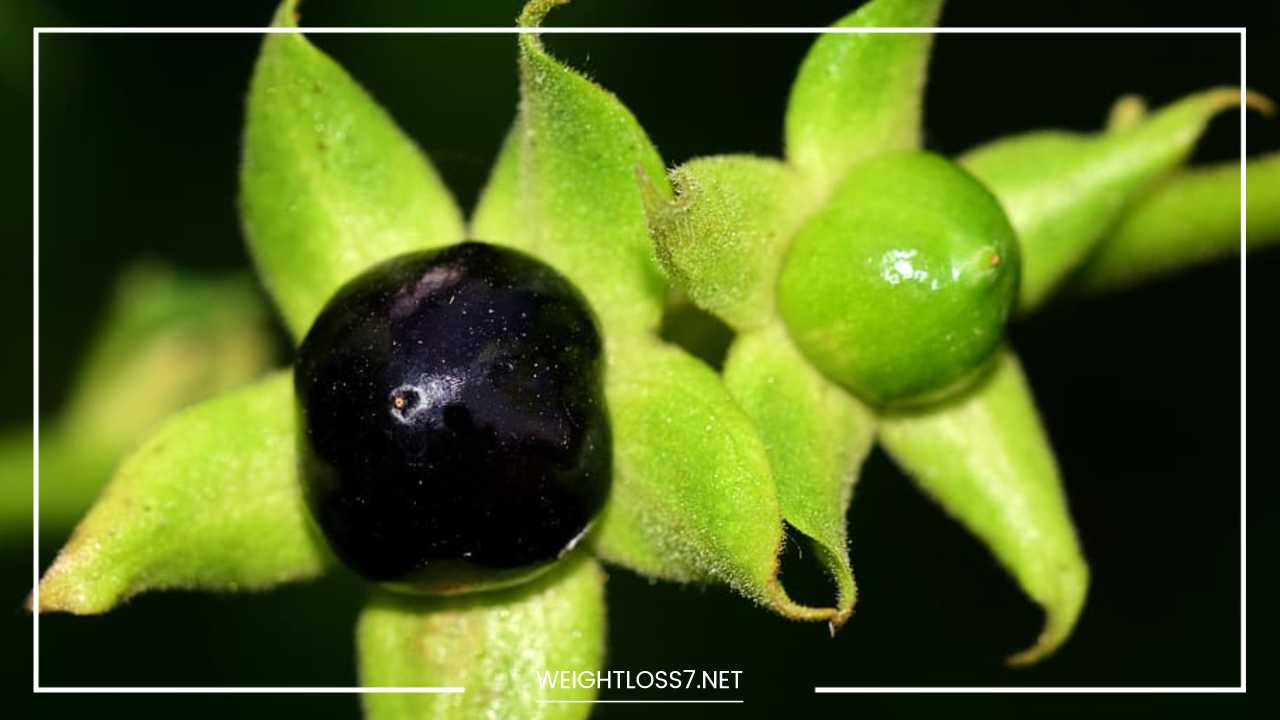Belladonna Uses and Health Benefits

Belladonna
Belladonna: Uses and Health Benefits
Belladonna, scientifically known as Atropa belladonna, is a perennial herb native to Europe, North Africa, and Western Asia. Commonly referred to as deadly nightshade, it is renowned for its striking bell-shaped flowers and shiny black berries.
Despite its notorious toxicity, belladonna has been used in traditional medicine for centuries. This post explores the uses, health benefits, and safety considerations of belladonna, emphasizing the importance of cautious use.
Historical Background
Origins and Cultural Significance
Belladonna’s name derives from the Italian phrase “bella donna,” meaning “beautiful woman.” During the Renaissance, women used belladonna eye drops to dilate their pupils, which was considered a mark of beauty. However, this practice posed significant risks due to the plant’s potent compounds.
Historically, belladonna was also used in various cultural rituals and as a cosmetic. The ancient Greeks and Romans utilized it as an anesthetic, while medieval witches allegedly incorporated it into their potions. The plant’s dual nature as both a poison and a medicine has fascinated people for centuries.
Active Compounds and Their Effects
Belladonna contains several potent alkaloids, primarily:
- Atropine
- Scopolamine
- Hyoscyamine
These alkaloids interact with the parasympathetic nervous system, leading to various physiological effects. They are classified as anticholinergics, meaning they block the neurotransmitter acetylcholine, which can result in muscle relaxation, pupil dilation, and increased heart rate.
Atropine
Atropine is perhaps the most well-known compound in belladonna. It has a wide range of applications, including:
- Ophthalmology: Used to dilate pupils for eye examinations.
- Cardiology: Employed to increase heart rate in cases of bradycardia (abnormally slow heart rate).
- Anesthesia: Reduces salivation and respiratory secretions during surgery.
Scopolamine
Scopolamine is primarily known for its effects on the central nervous system:
- Motion Sickness: Used in transdermal patches to prevent nausea and vomiting associated with motion sickness.
- Sedative: Has calming effects and can be used to alleviate anxiety.
Hyoscyamine
Hyoscyamine is effective in treating gastrointestinal and urinary tract disorders:
- Antispasmodic: Relieves muscle spasms in the digestive and urinary tracts.
- Pain Relief: Helps reduce discomfort from various conditions.
Traditional Uses of Belladonna
Belladonna has a rich history of use in traditional medicine, where it was employed to treat a variety of ailments:
Pain Relief
Historically, belladonna was applied topically or ingested in controlled doses to alleviate pain. Its antispasmodic and analgesic properties made it effective in treating:
- Headaches: Especially migraines and tension headaches.
- Muscle Pain: Relieves muscle spasms and cramps.
- Neuralgia: Alleviates nerve pain, particularly in conditions like trigeminal neuralgia.
Gastrointestinal Disorders
Belladonna has been used to treat various gastrointestinal issues:
- Irritable Bowel Syndrome (IBS): Reduces muscle spasms, alleviating symptoms like cramping and diarrhea.
- Colic: Helps soothe abdominal pain and discomfort.
- Peptic Ulcers: Historically used to reduce stomach acid and alleviate ulcer pain.
Respiratory Conditions
In traditional medicine, belladonna was employed to treat respiratory ailments:
- Asthma: Its bronchodilator properties help relax bronchial muscles, easing breathing.
- Bronchitis: Reduces mucus production and relieves cough.
Modern Medicinal Uses
Today, belladonna and its derivatives are used in various medical applications:
Ophthalmology
Atropine is commonly used in eye care:
- Pupil Dilation: Facilitates eye examinations and diagnoses of retinal conditions.
- Uveitis Treatment: Alleviates pain and prevents complications by dilating the pupil and reducing inflammation.
Anesthesia
In surgical settings, atropine is used as a pre-anesthetic medication:
- Reduction of Secretions: Minimizes salivation and respiratory secretions, preventing aspiration.
- Heart Rate Regulation: Helps stabilize heart rate during procedures.
Motion Sickness
Scopolamine, another alkaloid from belladonna, is widely used to prevent motion sickness:
- Transdermal Patches: Applied behind the ear, these patches release medication gradually, reducing nausea and vomiting by blocking specific neurotransmitters.
Parkinson’s Disease
Belladonna has been used in the treatment of Parkinson’s disease symptoms:
- Tremor Reduction: Alleviates tremors and muscle rigidity by balancing neurotransmitter levels in the brain.
- Adjunct Therapy: Used alongside other Parkinson’s medications for enhanced symptom control.
Homeopathic Uses
In homeopathy, belladonna is used in highly diluted forms to treat various conditions:
- Fever: Used to reduce high fevers with sudden onset.
- Inflammation: Treats acute inflammatory conditions, including sore throats and ear infections.
- Menstrual Pain: Alleviates cramps and discomfort during menstruation.
Homeopathic practitioners believe that belladonna stimulates the body’s healing processes, though scientific evidence for these uses remains limited.
Potential Health Benefits
Antispasmodic Properties
Belladonna’s antispasmodic properties make it beneficial for conditions involving muscle spasms:
- Gastrointestinal Issues: Relieves cramping in disorders like IBS and diverticulitis.
- Urinary Tract Disorders: Alleviates bladder spasms and pain associated with urinary tract infections (UTIs).
- Biliary Colic: Reduces pain from gallbladder spasms.
Anti-inflammatory Effects
The plant has been traditionally used for its anti-inflammatory effects:
- Arthritis: May help reduce joint inflammation and pain.
- Skin Conditions: Used in topical preparations for conditions like eczema and psoriasis, reducing redness and irritation.
Analgesic Properties
Belladonna may help reduce pain, particularly nerve pain or headaches:
- Migraines: Its ability to block certain nerve signals makes it a potential remedy for migraines.
- Neuralgias: Provides relief from various types of nerve pain, including sciatic and trigeminal neuralgia.
Sedative Effects
The calming properties of belladonna can help reduce anxiety and induce relaxation:
- Anxiety Relief: May alleviate symptoms of anxiety and stress.
- Insomnia: Used in some preparations to promote sleep.
Safety and Precautions
Toxicity Concerns
Belladonna is highly toxic, and improper use can lead to severe poisoning. Symptoms of belladonna poisoning include:
- Dilated Pupils
- Dry Mouth
- Difficulty Swallowing
- Rapid Heartbeat
- Hallucinations
- Seizures
In extreme cases, it can be fatal. Therefore, it is crucial to use belladonna only under the guidance of a qualified healthcare professional.
Drug Interactions
Belladonna may interact with various medications, including:
- Antihistamines: Can enhance anticholinergic effects, increasing the risk of side effects.
- Antidepressants: May lead to increased heart rate and blood pressure.
- Other Anticholinergic Drugs: Can amplify side effects such as dry mouth, constipation, and blurred vision.
Dosage and Administration
Proper Usage
When using belladonna or its derivatives, it is essential to follow dosing instructions carefully:
- Topical Applications: Often used for pain relief and skin conditions, applied in small amounts.
- Oral Dosage: Usually administered in very low doses, under professional supervision.
- Homeopathic Preparations: Highly diluted forms used in specific dosages recommended by a homeopath.
Importance of Professional Guidance
Due to its potent nature, belladonna should only be used under the guidance of a healthcare professional. Self-medication or incorrect dosing can lead to severe adverse effects.
Research and Scientific Evidence
While traditional and historical uses of belladonna are well-documented, scientific research is ongoing to explore its efficacy and safety:
- Clinical Trials: Some studies have focused on the use of belladonna in treating conditions like IBS and chronic pain, with mixed results.
- Pharmacological Studies: Research on the active compounds, particularly atropine and scopolamine, has provided insights into their mechanisms of action.
- Potential New Applications: Studies are investigating the potential use of belladonna in treating conditions like overactive bladder and certain psychiatric disorders.
Alternative Remedies
For those wary of belladonna’s toxicity, several alternative herbal remedies offer similar benefits:
- Peppermint Oil: Effective for IBS and digestive issues.
- Valerian Root: Used for anxiety and sleep disorders.
- Turmeric: Known for its anti-inflammatory properties, beneficial for arthritis and other inflammatory conditions.
These alternatives provide safer options for individuals who prefer to avoid the risks associated with belladonna.
Final Word
Belladonna has a long history of use in traditional medicine, offering various potential health benefits due to its active compounds. It can be beneficial for pain relief, gastrointestinal disorders, respiratory conditions, and more. However, its use should be approached with caution due to its high toxicity and potential side effects.
Always consult with a healthcare provider before using belladonna, especially if you are taking other medications or have underlying health conditions.
When used responsibly, belladonna can be a valuable component of herbal medicine, offering relief for certain conditions. However, safety should always be the top priority.
References
- National Center for Complementary and Integrative Health
- Journal of Herbal Medicine
- American Botanical Council
- MedlinePlus
- PubMed Articles on Belladonna and its Alkaloids
By understanding the potential benefits and risks associated with belladonna, individuals can make informed decisions about its use in their health regimens. Whether exploring traditional uses or modern applications, belladonna remains a fascinating and complex herb worthy of respect and caution.

















